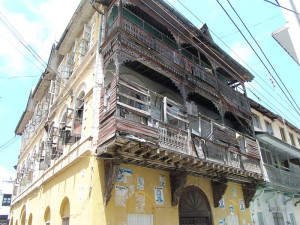Old Crafts Create New Jobs

The high, rhythmic ringing sound of the hammer with which he strikes the blunt end of the chisel lets Steenie Leny day dream. It’s less than a year since he was sitting on the side of the road leading to large hotels with a few carved animal figures spread in front of him, waiting for tourists with money to spend. The work was boring and not particularly lucrative. Today everything is different.
Steenie Leny has since completed training to be a wood carver. He applies the traditional techniques of his ancestors. And he has also found a job renovating old homes in the coastal Kenyan city of Lamu. At the moment he’s working on a balcony, using the chisel to cut finely engraved ornaments from the raw wood.
In the late 19805, the Kenyan government declared the old towns of Lamu and Mombasa to be protected national monuments and established the Conservation of Mombasa and Lanu Old Towns project. In these town centers, the traditional, narrow storied homes with carved balconies and doors and extensive stucco work were in danger of deteriorating. As people began to organize the restoration of the public and private buildings, they realized
that very few people still mastered the region’s traditional crafts. Knowledge of traditional carving techniques and ornamental stucco work was in danger of dying out, as was knowledge of working with traditional building materials such as mangrove wood and corral lime. The Swahili Cultural Center was established in 1992 in Mombasa as part of the conservation project. The facility works to keep Swahili traditions alive and has created jobs in the process.
Those who complete training courses know, for example, how to apply stucco and carve ornaments in wood. About 80 of the trained craftsmen are now employed by the project. Others have started their own businesses.
Because the Swahili’s traditional building methods were also used outside of Kenya, project participants have found work in other countries along the eastern coast of Africa. Many private homeowners cannot afford to restore their homes. The Community Conservation Fund therefore covers up to 75 percent of the costs using money provided by the Kenyan government.
In addition to preserving cultural heritage and creating new jobs, the project also helps protect the environment, according to the motto that it is better to carefully restore structures than to tear them down and rebuild.
More than 30 homes have already been restored. Additional orders have been placed, so Steenie Leny’s job should be secure for many years to come.
